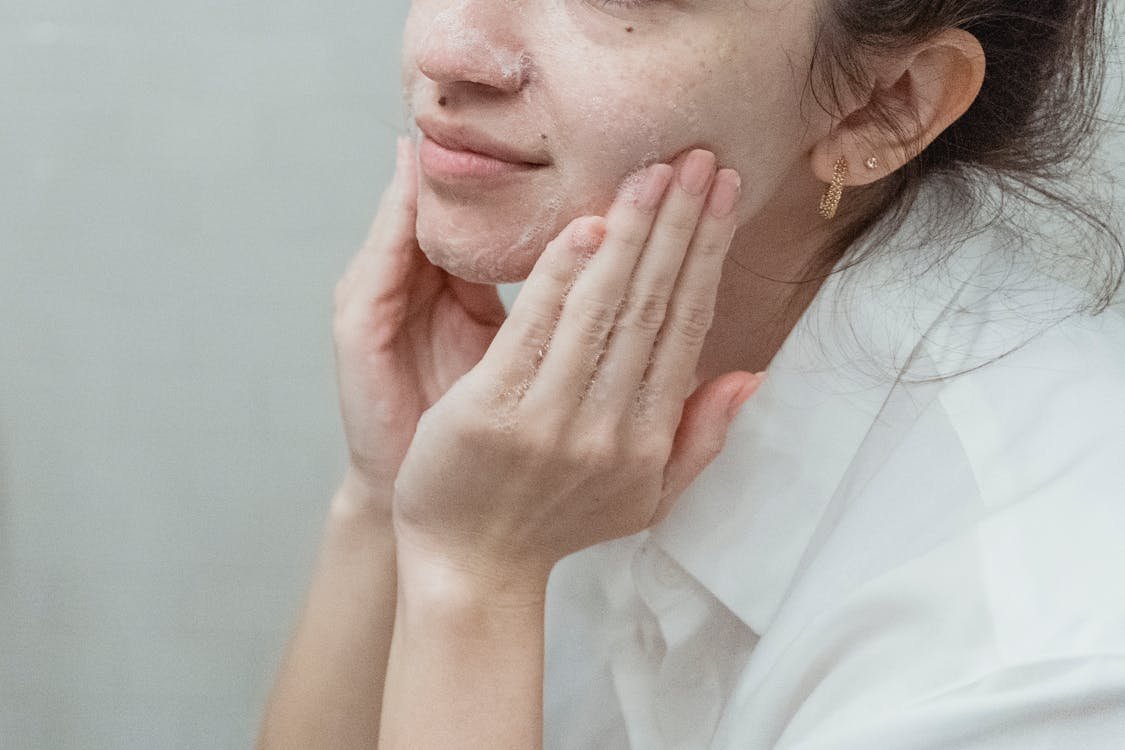Your face is the first thing people notice about you, and it’s only natural to want to take great care of it. One of the most important aspects of a good skincare routine is face cleansing. Proper face cleansing not only removes dirt, makeup, and impurities but also promotes healthy skin by unclogging pores, reducing breakouts, and allowing your skincare products to work more effectively. Whether you have oily, dry, or combination skin, following the right steps for face cleansing can transform your skin.
This blog post will explore the essential tips for face cleansing, common mistakes to avoid, and the best products for every skin type to help you achieve clear, radiant skin.
1. Understand Your Skin Type
Before diving into the world of face cleansing, it’s essential to understand your skin type. Not every cleanser will suit every skin type, so knowing your skin’s specific needs is key to choosing the right products.
Oily Skin: If your face feels greasy or shiny, especially on the T-zone (forehead, nose, and chin), you likely have oily skin. Oily skin requires a cleanser that can control excess oil without stripping the skin of moisture.
Dry Skin: If your face feels tight, flaky, or rough, you might have dry skin. Dry skin requires a more hydrating cleanser that won’t remove the skin’s natural oils, as harsh cleansers can worsen dryness.
Combination Skin: A combination of both oily and dry areas, typically with an oily T-zone and dry cheeks. People with combination skin need a balanced cleanser that can address both concerns without irritating.
Sensitive Skin: If your skin reacts to products easily, becoming red, itchy, or inflamed, you likely have sensitive skin. You should use a gentle, fragrance-free cleanser that won’t cause irritation or allergic reactions.
By understanding your skin type, you can choose the most suitable cleanser for your skin’s needs.
2. Use a Gentle Cleanser
When it comes to face cleansing, gentleness is key. Even if your skin feels dirty or oily, harsh scrubbing or strong cleansers can do more harm than good, leading to irritation, dryness, or breakouts.
Opt for a mild, pH-balanced cleanser: Your skin has a delicate pH balance, and using products that are too acidic or too alkaline can disrupt this balance, causing your skin to become irritated. A gentle, pH-balanced cleanser will clean your skin without causing dryness or irritation.
Choose a cleanser suited for your skin type: For dry skin, creamy or hydrating cleansers work best. For oily or acne-prone skin, gel-based or foaming cleansers may help control excess oil production.
Avoid cleansers with alcohol or harsh fragrances: These ingredients can strip your skin of its natural oils, causing dryness or irritation. Always check the label to ensure the cleanser is free from these harmful ingredients.
3. Cleanse Twice a Day
Cleansing your face in the morning and evening is vital for maintaining healthy skin. Cleansing in the morning helps to remove the oils your skin produces overnight and prepares it for the day ahead. In the evening, it’s essential to remove makeup, dirt, sweat, and environmental pollutants accumulated throughout the day.
Morning Cleanse: A gentle morning cleanse helps refresh the skin without over-drying. Choose a mild, non-stripping cleanser to avoid irritating your skin first thing.
Evening Cleanse: The evening cleanse is crucial for removing makeup and the day’s grime. You can use an oil-based cleanser or micellar water to break down makeup, followed by a regular cleanser to ensure all impurities are washed away.
4. Take Your Time When Cleansing
Many women rush through the cleansing process, but taking your time ensures better results. Proper face cleansing takes at least 1-2 minutes to ensure the cleanser is effective in removing all dirt and impurities.
Massage the cleanser gently into the skin: Use your fingertips in circular motions to work the cleanser into the skin. Avoid harsh scrubbing, as this can damage the skin and lead to irritation.
Don’t forget the neck and décolletage: Your face doesn’t end at your chin! Make sure to cleanse your neck and chest area as well, as these areas are also exposed to dirt, pollution, and makeup.
Rinse thoroughly: After massaging the cleanser, rinse your face with lukewarm water. Hot water can dry out your skin, while cold water may not be as effective at removing impurities. Pat your face dry with a soft towel afterward.
5. Exfoliate Once or Twice a Week
Exfoliating your skin can help remove dead skin cells, unclog pores, and give your face a smoother, more radiant appearance. However, it’s essential to exfoliate with care, as over-exfoliating can cause irritation and damage your skin barrier.
Use a gentle exfoliant: Choose an exfoliant that suits your skin type. For sensitive skin, look for mild exfoliating products with fine granules or enzymes that gently slough off dead skin cells.
Limit exfoliation to once or twice a week: Over-exfoliating can strip your skin of natural oils and cause redness. Stick to exfoliating 1-2 times a week for the best results.
6. Use Lukewarm Water
When cleansing your face, avoid using water that’s too hot or too cold. Hot water can strip your skin of its natural oils, while cold water may not remove dirt and oil effectively.
- Lukewarm water is ideal: Lukewarm water helps to open pores slightly, allowing your cleanser to penetrate better, while still being gentle on the skin.
7. Don’t Over-Cleanse
While it might seem like cleansing multiple times a day could keep your skin extra clean, over-cleansing can lead to dryness, irritation, and even an increase in oil production.
Stick to twice daily cleansing: Unless you’ve been sweating heavily or wearing makeup, it’s best to cleanse your face twice a day—morning and night.
Avoid harsh scrubbing or over-washing: Excessive washing can damage the skin’s protective barrier, leading to breakouts, irritation, and dehydration.
8. Use a Toner (Optional)
While toners aren’t necessary for everyone, they can provide additional benefits depending on your skin type. Toners help remove any remaining dirt or makeup, balance the skin’s pH levels, and prepare the skin for moisturizer.
- Choose a toner based on your skin needs: For oily skin, look for toners with ingredients like salicylic acid or witch hazel to control excess oil. For dry or sensitive skin, opt for hydrating, alcohol-free toners with soothing ingredients like rose water or aloe vera.
9. Follow Up with a Moisturizer
After cleansing, it’s crucial to restore your skin’s hydration by applying a moisturizer. Even if you have oily skin, don’t skip this step. Skipping moisturizer can make oily skin worse by triggering the production of more oil to compensate for the lack of hydration.
Pick a moisturizer for your skin type: Gel-based moisturizers are great for oily skin, while creamy, richer formulas are better suited for dry skin.
Don’t forget sunscreen: Sunscreen is a must every day, even if you’re staying indoors. UV rays can damage your skin, causing premature aging and increasing the risk of skin cancer.
10. Be Consistent
Consistency is key when it comes to skincare. Make cleansing a regular part of your daily routine, and avoid using too many products or frequently changing your skincare regimen. Stick to a simple, effective routine, and give your skin time to adjust to the products you use.
Proper face cleansing is an essential step in maintaining clear, healthy, and glowing skin. By understanding your skin type, using the right cleanser, and following a consistent skincare routine, you can keep your skin looking its best. Remember, gentleness is key—avoid harsh scrubbing and use products that suit your skin’s needs. Be patient, and with time, you’ll enjoy the benefits of a well-cleansed complexion!














